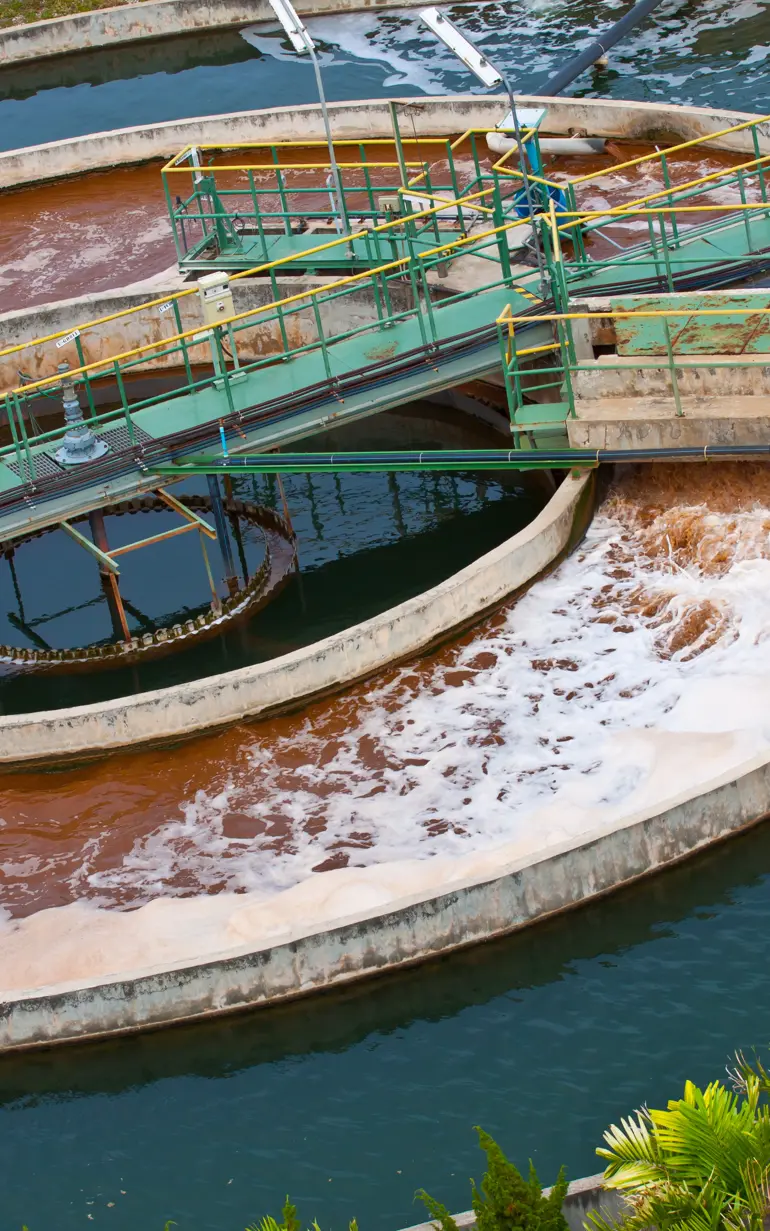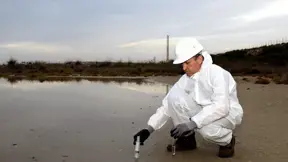
Optimising carbon harvest from WWTP influents
Exploring the potential of counter-current AB process (CCAB) applications in Denmark
Treatment of wastewater is required to reduce the carbon content as well as pollutants in the wastewater to mitigate eutrophication of the receiving water bodies. This process requires significant amounts of energy for pumping and aeration. Harvesting carbon (measured as chemical oxygen demand – COD) in the primary stage at the WWTP could be a cost-efficient way to lower energy requirements while using the removed carbon for biogas production. DHI received funding from the Market Development Fund to develop a new concept for COD harvest and to implement it in the primary stage at Esbjerg East WWTP, Denmark. With input from other Danish utilities, DHI developed the new counter-current AB process (CCAB), which increased COD harvest in the primary clarifier from 30% to 62%.
Challenge
The Danish Water and Wastewater Association performs a yearly benchmark of Danish WWTPs, which has revealed that in recent years, an increasing number of utilities have become energy neutral. This trend is expected to continue as it corresponds with local and national political goals. While WWTPs need significant amounts of energy for pumping and aeration, fortunately, utilities can claim major savings by improving treatment efficiency and increasing on-site energy production through anaerobic digestion of the primary sludge.
Existing technologies for increased COD harvest are costly and require high maintenance
Two commercially available technologies for increased COD harvest from municipal wastewater dominate the market: fine-mesh sieving (filtration) and chemically enhanced primary clarification. Both offer increased COD harvest compared to traditional methods, but unfortunately include significant downsides. Filtration requires advanced machinery with costly maintenance, while chemically enhanced clarification produces a high amount of inert chemical sludge that does not contribute to biogas production and generates additional load on the sludge handling systems.
Solution
Laboratory tests were carried out to determine the potential of CCAB operation before full-scale implementation and during full-scale operation at Esbjerg East WWTP. Good correlation was shown between lab and full-scale results. This allowed DHI to use lab-scale tests as an indicator of COD harvest potential of the technology. Advanced online process control was installed to ensure stable operation and sampling campaigns were performed to determine the actual COD harvest and used as input to model the CCAB process.
The modelling software WEST was used to run simulations of the baseline (current) operation of four WWTPs in Denmark. The results were compared to three alternative technologies with primary COD capture. The simulated scenarios included filtration, chemically enhanced clarification and CCAB systems. The endpoints for evaluation and comparison of the different scenarios were: (i) COD load provided for anaerobic digestion, (ii) power consumption for aeration and (iii) external carbon dosing to meet denitrification needs.
Results
-
Higher COD harvest
Lab-scale tests and full-scale operation showed comparably high COD harvest in the primary stage, from 30% to 62%. This number compares favourably with other commercially available technologies. -
Potential for increased efficiency (WEST results)
The CCAB process showed a positive impact on the energy production due to a doubling of the COD harvest in the primary stage. Furthermore, removing COD in the primary stage proportionally reduces aeration needs in the biological stage. A comparison of the test period with a similar period during baseline operation showed approximately 40% increased energy efficiency. -
Significant savings with short ROI times
The business cases evaluated favour CCAB operation in three out of four plants. CCAB operation is economically feasible at plants with existing primary clarifiers (ROI < 2 years) but also in cases where primary clarifiers would have to be built (ROI < 6 years). In all three cases, the yearly savings were higher for CCAB compared to any other scenario.
Location:
Denmark
Related SDGs:
SDG 6: Ensure availability and sustainable management of water and sanitation for all
Technology:
About the partnership
Eight Danish utility companies and the Danish Water and Wastewater Association joined forces and formed the Wastewater Partnership under the Market Development Fund to support research in the area of resource and energy extraction from wastewater. Three technologies were developed, among them the CCAB process.
You may also like
How can we help?
With our global network of offices, we make sure you get the right answers to your local needs. Tell us about your water challenges and we will get back to you.


